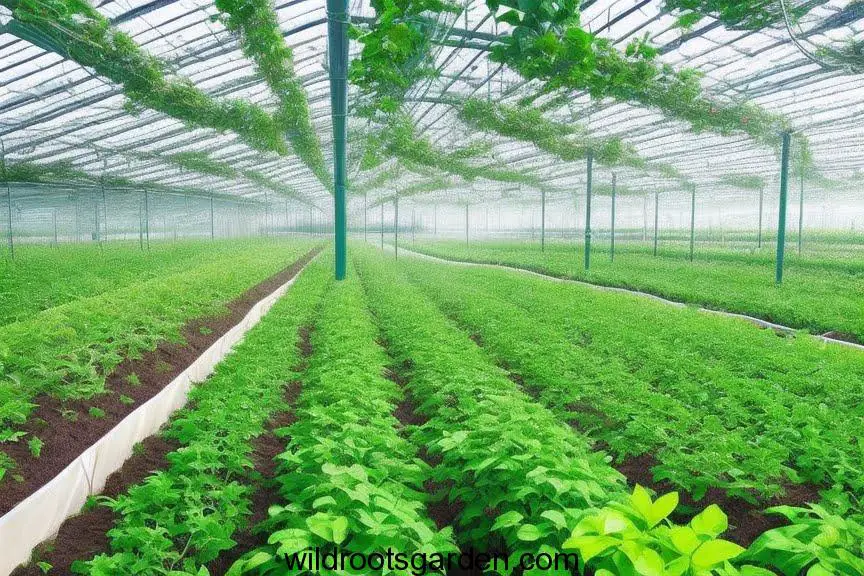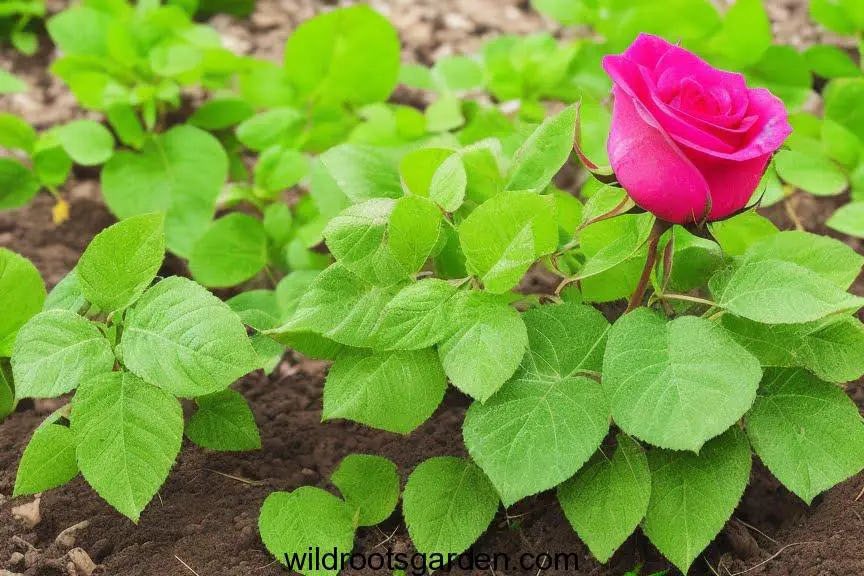Rose Cuttings Growing Leaves but Not Roots. This detailed manual provides advice and insights from industry professionals throughout the entire process, from preparation through propagation. A satisfying and economical method of propagating your preferred rose kinds is by growing roses from cuttings. On the other hand, it can be upsetting when rose cuttings produce leaves but fail to establish roots. We will examine how to cultivate rose cuttings in this post, consider potential causes for the lack of roots, and offer fixes to assure successful propagation. Our comprehensive guide will arm you with the knowledge and skills required to solve this frequent problem, regardless of how experienced a gardener you are.
Rose Cuttings Growing Leaves but Not Roots: An Overview
Let’s first comprehend the fundamental idea of growing rose cuttings before getting into the details. Vegetative propagation is the process of taking cuttings from an established rose plant and raising them to become independent, self-supporting plants. The cutting transforms into an autonomous plant that can survive on its own once it has both leaves and roots. Achieving this balance between leaves and roots is the desired outcome when growing roses from cuttings, but occasionally, rose cuttings may generate leaves without sufficient root development. Let’s examine the step-by-step procedure for properly growing rose cuttings and address the problem of leaves developing rootless.
Preparing the Rose Cuttings

To begin the propagation process, you need to collect healthy and disease-free rose cuttings from the parent plant. Follow these steps for preparing the cuttings:
- Selecting the Right Time: The best time to take rose cuttings is during late fall or early winter when the plant is dormant. During this period, the rose plant allocates more energy to root development, increasing the chances of successful propagation.
- Choosing the Right Stem: Select a healthy stem that is approximately 6-8 inches long and has at least three to four sets of leaves. The stem should be free from any signs of damage or disease.
- Cutting the Stem: Using sharp, sterilized pruning shears, make a clean diagonal cut just below a leaf node. A leaf node is the point on the stem where leaves emerge. Cutting at an angle helps increase the surface area for root development.
- Removing Leaves: Trim away all the leaves from the lower two-thirds of the stem. Leave only a couple of leaves at the top to aid in photosynthesis.
- Application of Rooting Hormone: While not mandatory, applying a rooting hormone to the cut end of the stem can enhance root development.
Providing the Right Growing Environment

To encourage root development and prevent the issue of leaves growing without roots, providing the right growing environment is crucial. Roses thrive under specific conditions that foster healthy root growth. Consider the following factors:
- Potting Mix: Use a well-draining potting mix consisting of equal parts of perlite, vermiculite, and peat moss. This mix allows excess water to drain away, preventing root rot.
- Container Selection: Choose a clean container with drainage holes to prevent waterlogging. Ensure the container is large enough to accommodate the cutting comfortably.
- Moisture Management: Keep the potting mix consistently moist but not waterlogged. Overwatering can lead to rot while underwatering can hinder root development.
- Humidity Control: Maintain a high level of humidity around the cutting to promote successful rooting. You can cover the cutting with a clear plastic bag or use a mini greenhouse to retain moisture.
- Temperature: Keep the cuttings in a warm location with temperatures between 65°F to 75°F (18°C to 24°C). Warmth encourages the growth of roots.
- Indirect Light: Place the container in a spot with bright, indirect light. Direct sunlight can scorch the cutting and hinder root development.
Monitoring Progress and Troubleshooting
Regularly checking on the development of your rose cuttings is crucial. The formation of roots can take many weeks even if they may have already begun to produce leaves. You can run into difficulties during this time that will prevent root growth. Here’s how to troubleshoot and resolve typical problems:
- Leaves Wilting: If the leaves on your cutting are wilting, it may indicate excessive water loss through transpiration. Ensure the humidity is adequately maintained around the cutting and consider misting the leaves with water.
- No Visible Roots: If several weeks have passed, and there are no signs of root development, check the cutting for rot or diseases. Trim away any discolored or mushy parts, apply a fungicide, and consider using a new cutting.
- Yellowing Leaves: Yellowing leaves could indicate nutrient deficiencies. Feed the cutting with a balanced liquid fertilizer to support healthy growth.
- Stunted Growth: Slow or stunted growth may be due to insufficient light or temperatures that are too low. Ensure the cutting receives adequate light and warmth.
- Pest Infestations: Keep an eye out for pests such as aphids or spider mites, which can harm the cutting. Use appropriate organic pest control methods to protect your plant.
Achieving Success with Rose Cuttings

To increase your chances of success and foster healthy root growth, follow these expert tips:
- Patience is Key: Root development can be a slow process, so be patient and avoid disturbing the cutting unnecessarily.
- Avoid Overcrowding: Give each cutting enough space to grow and develop its root system without competition.
- Hardening Off: Before transplanting your rooted cutting outdoors, gradually acclimate it to outdoor conditions over a week to prevent shock.
- Transplanting Carefully: When the cutting has a healthy root system, transplant it to a larger container or into the ground. Be gentle with the roots during transplantation.
- Watering Wisely: Once your cutting has established roots, water it deeply but infrequently to encourage the roots to grow deeper into the soil.
FAQs
Can I use any type of rose cutting for propagation?
Ideally, choose semi-hardwood cuttings from healthy, disease-free rose plants for propagation. These cuttings have the right balance of soft and hard tissue, making them more likely to root successfully.
How long does it take for rose cuttings to develop roots?
Root development can take anywhere from four to eight weeks or more, depending on various factors such as temperature, humidity, and the rose variety.
Can I propagate roses in water?
While some gardeners have had success rooting roses in water, it is generally not recommended as it may lead to weak root systems. It’s best to use a well-draining potting mix for better results.
What if my rose cutting has developed roots but not leaves?
If your cutting has developed roots without leaves, it may be due to inadequate light. Ensure the cutting receives enough bright, indirect light to promote leaf growth.
Can I use a heating mat to encourage root growth?
Yes, using a heating mat set to a low temperature can help maintain the ideal temperature for root growth, especially during colder months.
Is it normal for some cuttings not to root?
Yes, not all cuttings will root successfully. It’s a natural part of the propagation process, and some trial and error may be involved.
Conclusion
Growing rose cuttings is a rewarding experience, but successful roots call for careful attention and perseverance. You may solve the problem of rose cuttings growing leaves but no roots by following the instructions provided in this thorough tutorial. Be patient throughout the process, pick healthy cuttings, and give the ideal growing conditions. You’ll soon be rewarded with a flourishing rose plant that you self-propagated with patience, perseverance, and a little bit of gardening know-how.

